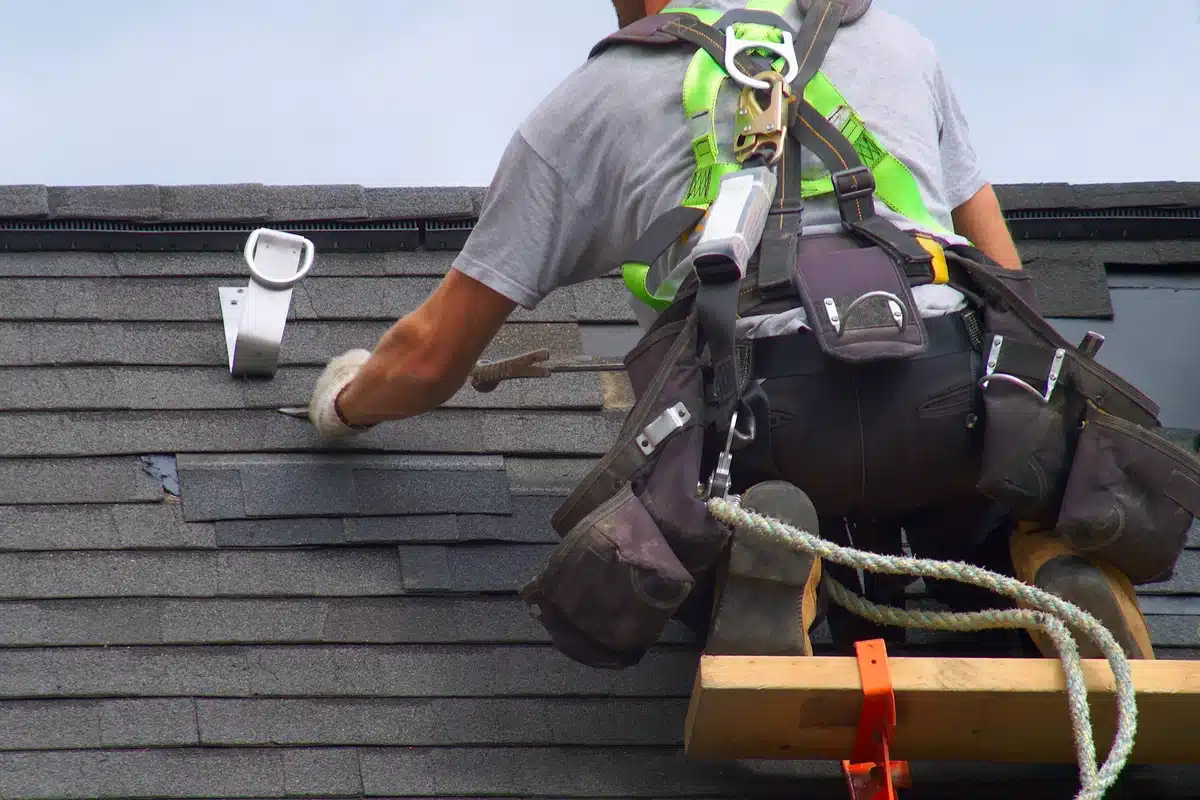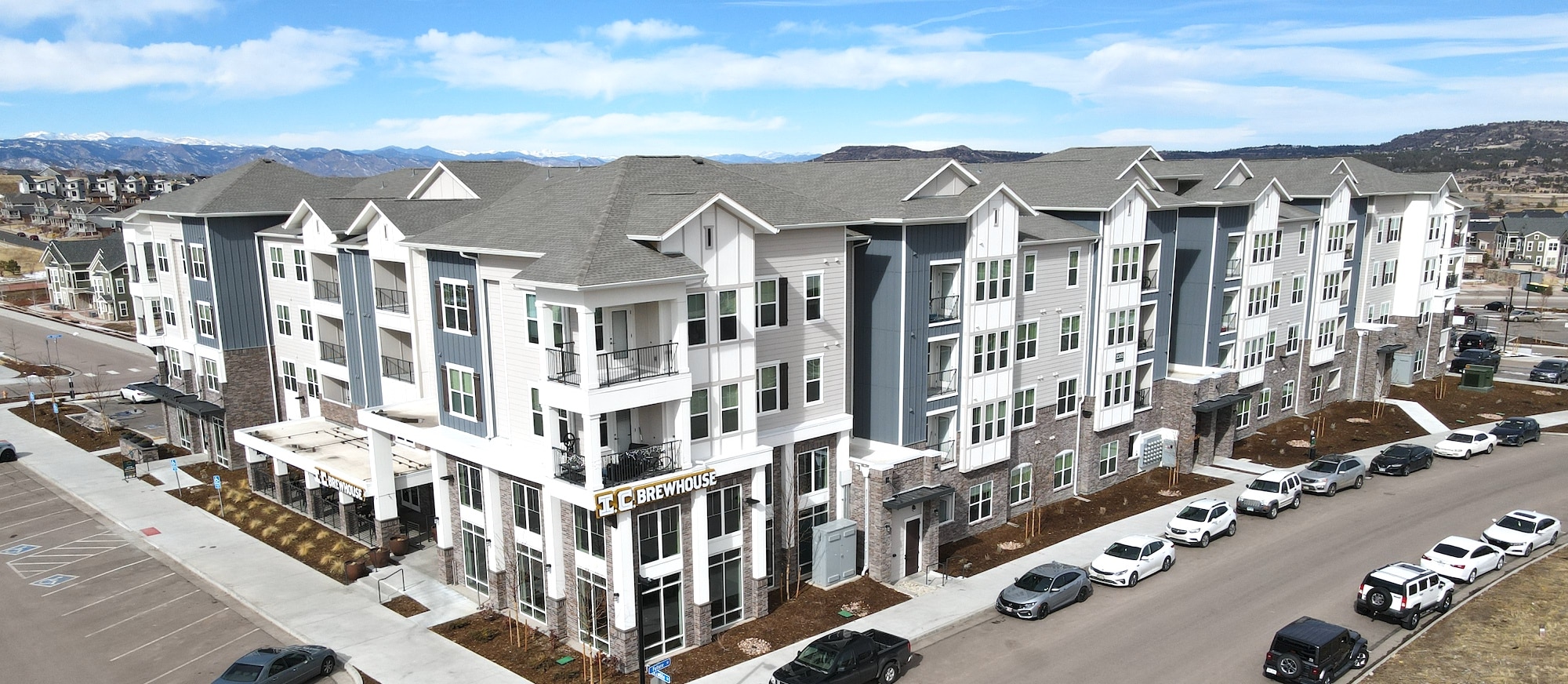[How To Patch a Roof]
Table of Contents
Your roof is a crucial component of your home, protecting it from the elements and keeping you and your belongings safe and dry. Over time, however, roofs can develop problems that require attention. [How To Patch a Roof]
Think you may need quick and reliable roofing solutions?
Ready to tackle the problem?
In this blog post, we’ll help you learn about:
- The signs of roof damage
- How to patch a roof
- When to call a professional
- The average cost of roof repairs

Signs of Roof Damage
Before you can start patching your roof, it’s important to identify the signs of roof damage. Regular inspections can help you catch problems early and prevent more extensive and costly repairs down the road. Here are some common signs of roof damage to watch out for:
- Leaks and Water Stains: Water stains on your ceiling or walls are a clear sign of a roof leak. Pooled water in your attic or crawl spaces can indicate a roof issue.
- Missing or Damaged Shingles: Check for any shingles that are missing, cracked, curled, or have granules missing. Damaged shingles can lead to leaks and should be addressed promptly.
- Sagging Roof: A sagging or uneven roofline may indicate structural damage or weakened roof supports.
- Clogged Gutters: Leaves, debris, and moss in your gutters can lead to water backups and roof damage.
- Interior Damage: Peeling paint or bubbling wallpaper may signal moisture problems stemming from the roof.
- Mold and Mildew: The growth of mold or mildew in your attic or on your roof can indicate poor ventilation or leaks.
- Damaged Flashing:Cracked or corroded flashing around chimneys, vents, and skylights can lead to leaks. [How To Patch a Roof]
How to Patch a Roof in 8 Steps
Once you’ve identified signs of roof damage, it’s time to address the issues and patch your roof. Keep in mind that patching your roof is a temporary solution. For more severe damage or if your roof is nearing the end of its lifespan, you may need a full roof replacement. Here’s how to patch a roof:
1) Safety First:
Always prioritize safety. Use appropriate safety gear, such as a harness and sturdy ladder. Work on a dry day to minimize the risk of slipping on wet surfaces.
2) Gather Materials:
- You’ll need roofing nails, a hammer, replacement shingles, roofing adhesive, and a utility knife.
- If you have a flat roof, you may need a roof patch kit with membrane material and adhesive.
3) Locate the Damage:
Inspect the roof carefully to identify the damaged areas. Focus on addressing leaks and damaged or missing shingles.
4) Remove Damaged Shingles:

Gently lift the shingles above the damaged area.Use a pry bar or a roofing knife to remove the damaged shingles. Be careful not to damage the surrounding shingles.
5) Replace Shingles:
Slide the new shingle into place, aligning it with the existing shingles. Secure the shingle with roofing nails, making sure they penetrate the underlying roof deck. Apply roofing adhesive under the shingle tabs and press them down firmly. [How To Patch a Roof]
6) Seal the Edges:
Apply roofing cement or sealant around the edges of the new shingle to prevent water infiltration.
7) Repair Flashing:
If flashing is damaged, remove the old caulk and replace it with new sealant or flashing material. Ensure that the flashing is securely in place and sealed to prevent leaks.
8) Clear Gutters:
Regularly clean out gutters and downspouts to prevent water backup and potential roof damage.
When to Call a Professional

While some minor roof repairs can be done by homeowners, there are instances when it’s best to call a professional roofing contractor. Here are some situations where professional help is recommended:
- Extensive Damage: If a significant portion of your roof is damaged, it’s better to have a professional assess and repair it.
- Complex Repairs: Complex issues like extensive flashing damage or structural problems require specialized knowledge and equipment.
- Safety Concerns: Steep or high roofs pose a safety risk. Professionals have the training and equipment to work safely at elevated heights.
- Warranty Preservation: If your roof is still under warranty, hiring a professional ensures that repairs won’t void the warranty.
- Roof Replacement: If your roof is nearing the end of its lifespan, it may be more cost-effective to opt for a roof replacement instead of multiple patches.
- Insurance Claims: Professional roofers can help you navigate insurance claims, ensuring you receive appropriate coverage for repairs. [How To Patch a Roof]
Average Cost of Roof Repairs
The cost of roof repairs can vary widely depending on factors such as the extent of damage, the type of roofing material, and your location. On average, homeowners can expect to pay between $300 and $1,000 for roof repairs. Here’s a breakdown of potential costs:
- Minor Repairs: Small repairs like fixing a few missing shingles or sealing flashing may cost between $150 and $400.
- Moderate Repairs: Repairing more extensive damage, such as multiple damaged shingles or minor leaks, can range from $400 to $800.
- Major Repairs: Addressing significant leaks, extensive flashing damage, or structural issues may cost $800 to $1,500 or more.
- Roof Replacement: If your roof is in poor condition and needs a full replacement, the cost can range from $5,000 to $15,000 or higher, depending on materials and size. [How To Patch a Roof]
Stop Your Leaking Roof In It’s Tracks
Your roof plays a vital role in protecting your home and everything inside it. Regular inspections and prompt repairs can extend the lifespan of your roof and prevent more costly issues. By understanding the signs of roof damage, knowing how to patch a roof, and recognizing when to call a professional, you can keep your roof in top condition and ensure your home remains a safe and comfortable haven. If you’re unsure about the extent of damage or how to proceed, don’t hesitate to consult with a qualified roofing professional.If you are ready to tackle roof leaks, call on your roof leak repair experts at Tectum Roofing! Contact us today for reliable roof repairs when you need them most. [How To Patch a Roof]



